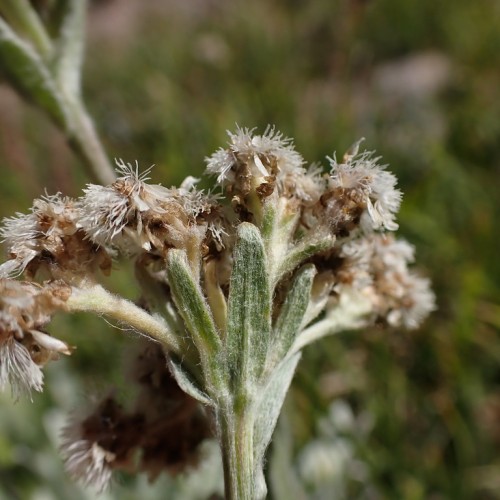
Pussytoes
Antennaria howellii subsp. neodioica
Also Known As - Small Pussytoes,Northern PussytoesWatering:
Average
Hardiness Zone:
Flowers:
Flowers
Sun:
Sun
Soil:
Clay, Sand
Leaf:
Yes
Growth Rate:
Low
Salt Tolerant:
Yes
watering
Pussytoes prefer well-drained soil and can tolerate sandy soils. Water the plant regularly during the first growing season, providing deep, occasional watering sessions so that the water can penetrate at least 6 inches deep into the soil. Water when the soil feels slightly dry to the touch, particularly during the warmer months. During the winter, cut back on watering, as the plant goes dormant and requires much less moisture. As a general rule of thumb, water the plant every 7-10 days during the growing season (spring and summer) and every 5-7 days during the fall.
sunlight
Pussytoes (Antennaria howellii subsp. neodioica) is a perennial species that thrives best in full sunlight. It requires between 6 and 8 hours of direct sunlight per day to remain healthy and blooming, with the best results obtained when plants are exposed to full sunlight for all 8 hours. In terms of timing, it is best to plant Pussytoes in an area where the sun will be most intense during the morning hours, and gradually reducing as the day progresses. This will ensure that the plant receives energy throughout the day and is best able to photosynthesize and develop strong roots.
pruning
Pussytoes (Antennaria howellii subsp. neodioica) should be pruned at least once a year, usually in late winter or early spring before the plant begins new growth. Start by cutting out any dead or dying branches or stems from the bush removing back to at least 1 or 2 joints from where the dead portion ends. This will help encourage strong growth when the new season begins. You can also remove any old or diseased leaves, or any shoots that are growing too close together. Prune to the desired shape and size and remove any branches or stems that are crossing over each other as they may be rubbing and susceptible to disease.
